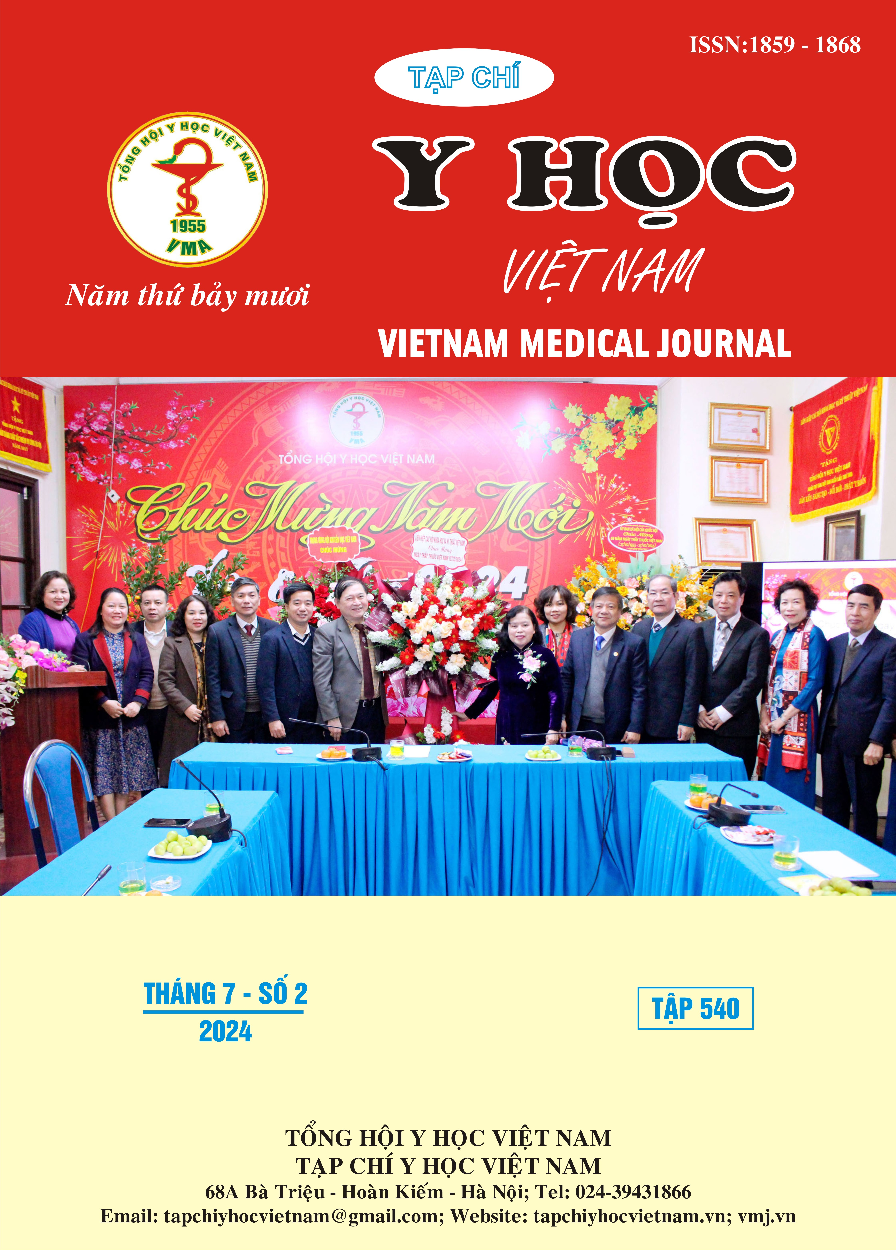CESAREAN SECTION RATE AND ASSOCIATED FACTORS IN NULLIPAROUS WOMEN AT GIA LAI HOSPITAL
Main Article Content
Abstract
Objectives: Determine the rate of cesarean section for women with first children at Gia Lai Provincial General Hospital and learn some factors related to the causes of cesarean section for first children. Methods: The study used a descriptive design, using retrospective data on 246 pregnant women undergoing cesarean section upon delivery at Gia Lai Provincial General Hospital from January 1, 2023 to December 31, 2023. Results: The rate of cesarean section in the study group in 2022 reached 59.35%, higher than the group of women giving birth naturally (40.65%). Pregnant women with first-born children are scheduled for cesarean section in the fetal cause group, accounting for the highest rate at 68.49%, followed by the fetal adnexal cause group accounting for 26.71%, and the lowest cause group is the fetal cause group. due to social reasons accounting for 7.53%. The rate of cesarean section (cesarean section) is higher among pregnant women living in urban areas (75%) compared to rural areas (56.31%), Kinh ethnic groups (70.65%) compared to ethnic minorities (52.6%) (P<0.05). The cesarean section rate was highest in the under 19 age group (75%), gradually decreasing through higher age groups (P>0.05). All cases of breech presentation were referred for cesarean section, while only 56.9% of breech presentation cases received cesarean section (P<0.05). There was no difference in cesarean section rate between gestational age groups (P>0.05). Conclusion: The rate of cesarean section is higher than that of vaginal birth with the most common cause being fetal distress. Indications for cesarean section are often due to a combination of many reasons. There is a relationship between address, ethnicity and fetal position with cesarean section rate.
Article Details
Keywords
Caesarean section, nulliparous women
References
2. Begum T., A. Rahman, H. Nababan, D. M. E. Hoque, A. F. Khan, T. Ali, I. Anwar (2017), “Indications and determinants of caesarean section delivery: Evidence from a population-based study in Matlab, Bangladesh”, PLoS One, 12, (11), e0188074.
3. Phạm Thị Bé Lan (2019), “Thực trạng mổ lấy thai và một số yếu tố liên quan tại thành phố Trà Vinh, tỉnh Trà Vinh năm 2018”, Tạp chí Y học Thành phố Hồ Chí Minh, 2, (23), tr. 141-146.
4. Phùng Ngọc Hân, Lê Minh Tâm, Trương Quang Vinh (2017), “Chỉ định mổ lấy thai con so tại Bệnh viện Đại học Y Dược Huế”, Tạp chí Phụ sản, 15, (1), 41 - 46.


